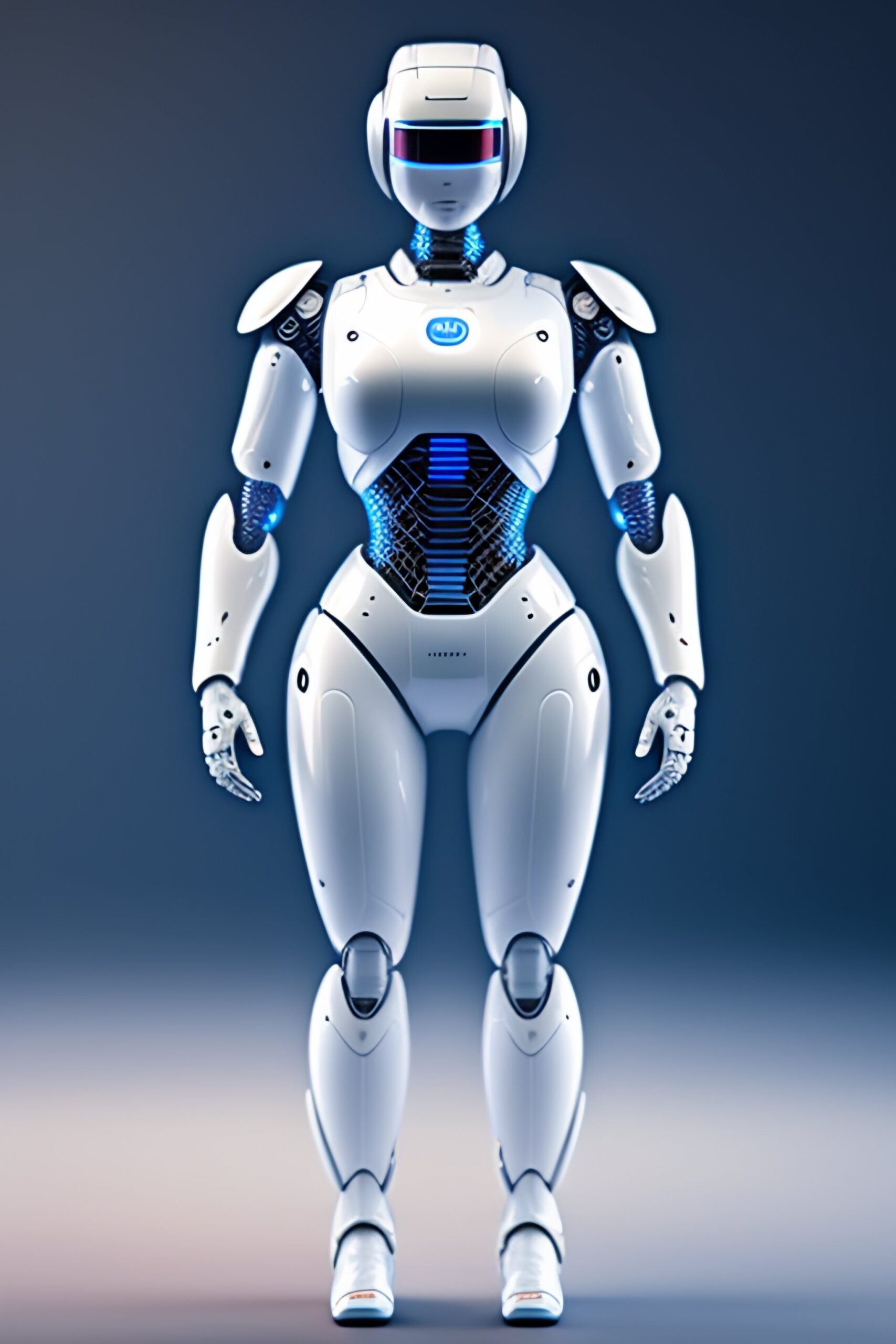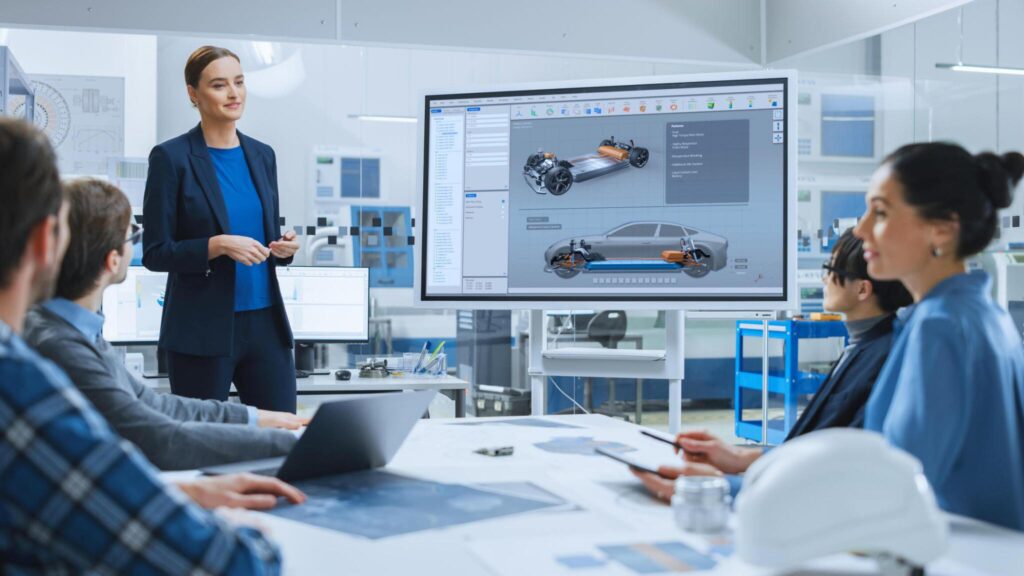Are you fascinated by the potential of artificial intelligence and robotics? Do you want to learn how to build your own AI robot? Well, you’re in luck because we’ve got an in-depth guide to help you do just that! build a artificial intelligence robot…
Building an AI robot can seem intimidating at first, but with the right tools and resources, it can be a fun and rewarding experience. In this article, we’ll take you through the step-by-step process of building your own AI robot.
So, grab your tool kit and let’s get started!
Step 1: Determine the Purpose of Your Robot Before you begin building your robot, you need to determine its purpose. Ask yourself what you want your robot to do. Will it be a personal assistant or a companion?
Will it perform tasks around your home or workplace? Once you’ve determined the purpose of your robot, you can move on to the next step.
Step 2: Choose Your Hardware The hardware you choose will depend on the purpose of your robot. You’ll need a microcontroller, motors, sensors, and other components to build your robot. Some popular options for microcontrollers are Arduino and Raspberry Pi. You can also choose from a variety of motors and sensors depending on your needs.
Step 3: Program Your Robot Once you have your hardware, it’s time to program your robot. You can use programming languages like Python, C++, or Java to program your robot. You’ll need to write code for your robot’s movements and behavior.
Step 4: Test and Refine Your Robot After programming your robot, you’ll need to test it to see if it functions as intended. If not, you’ll need to refine the code and make necessary adjustments to the hardware.
Step 5: Add AI and Machine Learning To make your robot intelligent, you’ll need to add AI and machine learning capabilities. You can use platforms like TensorFlow or PyTorch to add these capabilities. This will allow your robot to learn and improve over time.
Step 6: Add Speech and Vision Capabilities To make your robot even more interactive, you can add speech and vision capabilities. You can use platforms like Google Speech API or OpenCV to add these capabilities to your robot.
Step 7: Customize Your Robot Once your robot is functional, you can customize its appearance and add personality to it. This will make your robot unique and add a personal touch to your creation.
Building an AI robot may seem like a daunting task, but with the right tools and resources, it’s a fun and rewarding experience.
By following these steps, you can build your own AI robot and bring your ideas to life. With advancements in AI and robotics, the possibilities are endless.
So, what are you waiting for? Let’s get building!
Artificial Intelligence (AI) has already become a part of our daily lives in many ways, and it’s only going to become more prominent as the technology advances. From smart homes to autonomous vehicles, AI is changing the way we live, work, and interact with each other. In this article, we’ll explore the ways that AI is set to revolutionize our lives and what we can expect in the future.
What is Artificial Intelligence?
Artificial Intelligence is the simulation of human intelligence in machines that are programmed to think and learn like humans. These machines can perform tasks that typically require human intelligence, such as recognizing speech, making decisions, and solving problems.
AI has been around for decades, but recent advancements in machine learning, deep learning, and neural networks have made it more powerful and capable than ever before.
build a artificial intelligence robot 🤞
This has led to the development of intelligent systems that can analyze massive amounts of data, learn from it, and make predictions and decisions based on that learning.
How Will AI Affect Your Life?
- Healthcare
AI is already being used in healthcare to improve patient outcomes, reduce costs, and increase efficiency. For example, AI-powered systems can help doctors diagnose diseases more accurately and develop personalized treatment plans for patients.
They can also analyze patient data to identify trends and patterns that can help predict disease outbreaks and improve public health.
- Education
AI has the potential to transform the education system by providing personalized learning experiences for students.
AI-powered systems can analyze student data to identify areas where they need extra help and provide them with targeted learning materials.
This can help students learn more efficiently and effectively and improve their academic performance.
- Transportation
AI is set to revolutionize transportation by making it safer, more efficient, and more environmentally friendly. Self-driving cars, trucks, and buses are already being tested on public roads, and they have the potential to reduce traffic congestion, accidents, and emissions. AI-powered traffic management systems can also optimize traffic flow and reduce delays.
- Manufacturing
AI is already being used in manufacturing to improve efficiency and quality. AI-powered systems can analyze data from sensors and other sources to optimize production processes, reduce waste, and improve product quality. They can also predict maintenance needs and reduce downtime.
- Entertainment
AI is transforming the entertainment industry by creating new forms of interactive content. For example, AI-powered chatbots can provide personalized movie recommendations and trivia quizzes. AI-powered virtual assistants can also help users find and stream their favorite TV shows and movies.
The Future of AI – build a artificial intelligence robot
As AI technology continues to advance, we can expect it to become even more ubiquitous in our daily lives. It will be used to improve everything from our homes and workplaces to our healthcare and education systems.
However, there are also concerns about the potential negative effects of AI, such as job loss, privacy concerns, and the development of autonomous weapons.
As with any new technology, it’s important to approach AI with caution and to address these concerns as they arise.
By doing so, we can ensure that AI is used to benefit humanity and improve our lives, rather than to cause harm.
Artificial Intelligence is already changing the world in profound ways, and it’s only going to become more important in the future.
By understanding the potential benefits and risks of AI, we can prepare ourselves for the changes that are coming and make sure that they are positive ones. With responsible development and deployment, AI has the potential to make our lives better in countless ways.
Introduction:
Artificial intelligence (AI) is one of the fastest-growing fields in technology today. It is transforming the way we live, work, and interact with one another. AI has the potential to revolutionize industries from healthcare to finance, and it is changing the way we think about what it means to be human.
In this article, we will explore the book “The Most Human Human: What Artificial Intelligence Teaches Us About Being Alive” by Brian Christian, which delves into the implications of AI on human existence.
Chapter 1: What does it mean to be human?
The first chapter of the book explores the question of what it means to be human. It delves into the concept of the Turing test, a measure of a machine’s ability to exhibit human-like intelligence. The author argues that the Turing test is not a perfect measure of intelligence, as it only tests a machine’s ability to imitate human responses.
The book explores the ways in which humans are different from machines, such as our ability to understand humor and sarcasm and our capacity for creativity.
Chapter 2: The history of artificial intelligence
In the second chapter, the book delves into the history of artificial intelligence. It covers the early days of AI research in the 1950s and 1960s and the various breakthroughs that have occurred since then.
The chapter discusses the different approaches to AI, such as rule-based systems and machine learning, and how these approaches have evolved over time.
Chapter 3: The evolution of language
The third chapter of the book focuses on the evolution of language and how it has influenced the development of AI. It explores the ways in which language is a uniquely human trait and how it has allowed us to build complex societies. The chapter also discusses the ways in which machines are learning to understand and use language, and the implications of this for human communication.
Chapter 4: The future of work
In the fourth chapter, the book explores the impact of AI on the future of work. The chapter discusses the ways in which machines are becoming increasingly capable of performing tasks that were once the exclusive domain of humans. The chapter also explores the potential impact of AI on the job market and how it may change the way we think about work.
Chapter 5: Ethics and artificial intelligence
The fifth chapter of the book focuses on the ethical implications of AI. It explores the ways in which machines are becoming more autonomous and the potential risks associated with this trend. The chapter also discusses the need for ethical guidelines for the development and deployment of AI systems.
Chapter 6: The quest for the most human human
The final chapter of the book explores the concept of the “most human human.” It delves into the idea that as machines become more intelligent, it is essential for humans to retain their humanity. The chapter discusses the ways in which humans can strive to be more human and how this can be a source of strength in the face of technological change.
Conclusion: build a artificial intelligence robot
In conclusion, “The Most Human Human: What Artificial Intelligence Teaches Us About Being Alive” is a thought-provoking book that explores the implications of AI on human existence.
It delves into the ways in which machines are becoming more intelligent and the potential risks associated with this trend.
The book also explores the ways in which humans are different from machines and how we can strive to be more human in the face of technological change.
It is a must-read for anyone interested in the future of technology and its impact on society.
Author – Best Educator online



